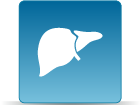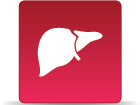Hexachlorobenzene
CASRN 118-74-1 | DTXSID2020682
- IRIS Summary (PDF) (16 pp, 129 K)
Noncancer Assessment
Reference Dose for Oral Exposure (RfD) (PDF) (16 pp, 129 K)
Last Updated: 09/26/1988
| System | RfD (mg/kg-day) | Basis | PoD | Composite UF | Confidence |
|---|---|---|---|---|---|
| Hepatic | 8 x 10-4 | Liver effects |
NOAEL
: 8 x 10-2 mg/kg-day |
100 | Medium |
Reference Concentration for Inhalation Exposure (RfC) (PDF) (16 pp, 129 K)
Last Updated: 03/01/1991
Information reviewed but value not estimated.
Cancer Assessment
Weight of Evidence for Cancer (PDF) (16 pp, 129 K)
Last Updated: 03/01/1991
| WOE Characterization | Framework for WOE Characterization |
|---|---|
| B2 (Probable human carcinogen - based on sufficient evidence of carcinogenicity in animals) | Guidelines for Carcinogen Risk Assessment (U.S. EPA, 1986) |
- Hexachlorobenzene, when administered orally, has been shown to induce tumors in the liver, thyroid and kidney in three rodent species.
- This may be a synopsis of the full weight-of-evidence narrative.
Quantitative Estimate of Carcinogenic Risk from Oral Exposure (PDF) (16 pp, 129 K)
Oral Slope Factor:
1.6 per mg/kg-day
Drinking Water Unit Risk:
4.6 x 10 -5 per µg/L
Extrapolation Method:
Linearized multistage, extra risk
Tumor site(s): Hepatic
Tumor type(s): Hepatocellular carcinoma (Erturk et al., 1986)
Quantitative Estimate of Carcinogenic Risk from Inhalation Exposure (PDF) (16 pp, 129 K)
Inhalation Unit Risk:
4.6 x 10 -4 per µg/m3
Extrapolation Method:
Linearized multistage, extra risk
Tumor site(s): Hepatic
Tumor type(s): Hepatocellular carcinoma (Erturk et al., 1986)
- Human Health Benchmarks for Pesticides (HHBP). This database provides human health benchmarks for pesticides that may be present in drinking water.
- Office of Pesticide Programs Pesticide Chemical Search. This database provides links to health effects information and registration status for pesticides.
- Chemistry Dashboard. This database provides information on chemical structures, experimental and predicted physicochemical, and toxicity data.
You will need Adobe Reader to view some of the files on this page. See EPA’s PDF page to learn more.



